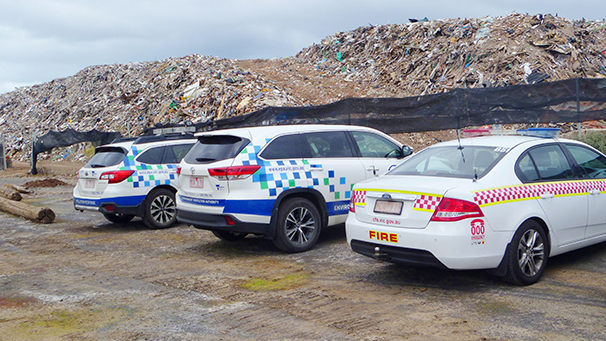The Environment Protection Authority Victoria (EPA) is Victoria’s independent environment regulator. Our role is to check and enforce compliance with the Environment Protection Act (2017).
We are responsible for preventing pollution (including noise) and improving the quality of the environment. We work with partners to achieve the best outcomes for the environment. This includes:
The EPA is an independent statutory authority. The Environment Protection Act 2017 defines the EPA’s powers, duties and functions. It also provides a framework for the prevention and control of:
-
air
-
land and water pollution
-
industrial noise
-
waste.
Who we work with
-
Local councils have an important role in protecting the environment and human health. They are our partners, joint-regulators, and duty holders.
We regulate local government activities that may have environmental or human health impacts. The local government sector guide (publication 1821) can help councils identify which activities could cause harm from pollution and waste.
Council also play an important role under the Environment Protection Act 2017. They have powers to regulate:
- onsite wastewater management systems with a sewage flow of 5000 litres or less on any day
- noise from residential premises and residential construction or demolition sites
- litter and other waste, including illegal dumping.
We work closely with councils through the Officers for the Protection of the Local Environment (OPLE) program. OPLEs are EPA Authorised Officers tasked with responding to smaller-scale and lower risk pollution and waste reports, in collaboration with local Councils.
Resources for councils
To find EPA information and resources for councils, visit our resources for local government page.
-
EMV leads emergency management in Victoria by working with communities, government, agencies and business to strengthen their capacity to withstand, plan for, respond to and recover from emergencies.
EPA provides a technical support agency role in Victoria’s emergency management arrangements. We provide technical advice before, during and after emergencies, through scientific, engineering and regulatory expertise on the environmental and public health impacts of pollution and waste.
The State Emergency Management Plan (SEMP) outlines EPA's role and responsibilities in emergency management.
-
As a statutory referral authority, the EPA has responsibilities under the Planning and Environment Act 1987. The EPA provides comment on planning proposals. Proposals are referred to EPA for comment if there are potential risks to the environment, human health and amenity due to pollution and waste.
For example, if the Minister decides an Environmental Effects Statements (EES) is required, it is DEECA's role to coordinate the process, and it is EPA's role to provide input in a technical advisory capacity.
The EPA also provides a technical advisory role on infrastructure projects that may impact the environment. EPA works with DEECA and DEECA entities such as the Department of Transport and Planning (DTP) and the Major Transport Infrastructure Authority (MTIA).
-
Recycling Victoria is a dedicated business unit within DEECA. We work with Recycling Victoria on matters relating to waste and recycling regulation. For example, EPA works in partnership with Recycle Victoria on the Victorian Government's circular economy plan.
-
The EPA also works with the MTIA. We ensure compliance with the Environment Protection Act 2017 for infrastructure projects. The EPA has had a technical advisory role on large MTIA projects:
- North East Link Project
- Melbourne Metro Rail Project, known as the Metro Tunnel Project
- West Gate Tunnel Project
- Mordialloc Freeway (also referred to as the Mordialloc Bypass Project)
- Western Highway Project – Section 2B – Buangor to Ararat
- Echuca-Moama Bridge Project (Stage 3)
- Edithvale and Bonbeach Level Crossing Removal Projects
- Princes Highway East Duplication Project (Stage 3).
-
EPA works with Agriculture Victoria on a number of matters relating to waste and pollution. For example, in the event of a biosecurity emergency, the State Emergency Management Plan (SEMP) states that EPA will act as a support agency to Agriculture Victoria (the control agency).
-
We work with the Victorian Fisheries Authority (VFA) when responding to fish deaths. Our publication, Fish death events response guide, lays out the roles and responsibilities of water management and government agencies.
-
HEPA is an informal alliance of environmental regulation leaders from Australia and New Zealand. HEPA members work together proactively to understand current and emerging environmental issues, share information, align standards and build regulatory capability.
Read more about how the EPA works with HEPA.

